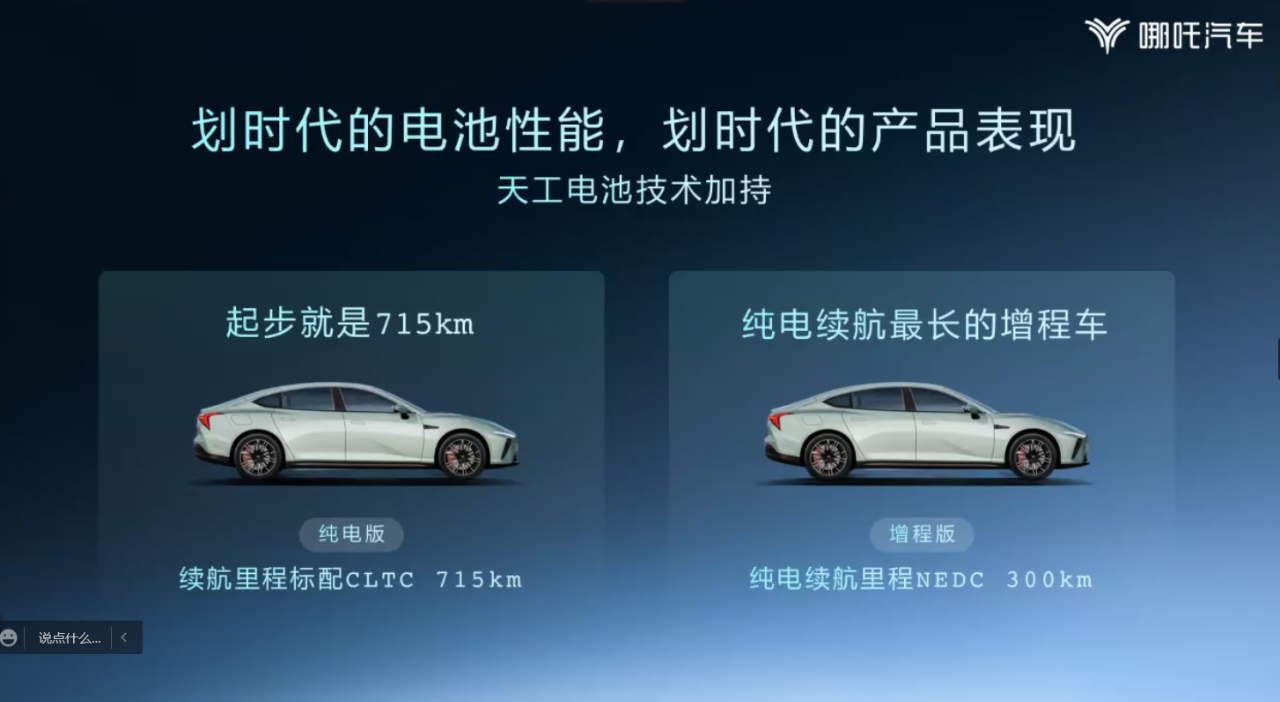Author | Lingfang Wang
Editor | Kaijun Qiu
Nowadays, electric vehicle companies are ashamed to show their faces on the street without some battery black technology.
NETA Auto, a new force in the automotive industry, is no exception. As a company that embraces traditional Chinese culture, it has launched a groundbreaking “Heavenly Work Battery” named after the ancient Chinese book “The Exploitation of the Works of Nature,” which means “Nature creates, and Industry opens”.
On May 30th, NETA Auto held an online Netalks battery technology communication meeting, where they introduced in detail the technology and features of the Heavenly Work Battery.
What sets NETA’s Heavenly Work Battery System apart is not only its safety, but also its involvement of algorithms.
The Heavenly Work Battery System has three main features: in terms of safety, it emphasizes insulation, flame retardancy, and electrical protection; in terms of thermal management, it has a constant temperature thermal management system; in terms of the entire battery life cycle management, it uses forward-thinking to perform closed-loop management of the battery, thus achieving safety, efficiency, and energy conservation.
In addition, NETA revealed that its next-generation (third-generation) Heavenly Work Battery System will use CTB/CTC technology and reserve skateboard chassis technology, which will be announced soon.
Currently, this technology will be applied to the NETA S model displayed at the Guangdong-Hong Kong-Macao Greater Bay Area Auto Show.
With the support of this technology, the NETA S pure electric version CLTC has a range of 715 kilometers, and the extended-range electric vehicle also has a pure electric range of 300 kilometers. Of course, the current NETA S only has a two-wheel drive version, and the range of the four-wheel drive version is slightly different.
Design: Balancing Safety and High Energy Density
To achieve battery pack safety, the ignition of the battery cells needs to be blocked. The methods adopted by automakers and battery companies are generally sealing and releasing.
According to Zhang Honglei, NETA Auto’s assistant president and executive vice president of the Automotive Engineering Research Institute, the Heavenly Work Battery System is designed from three aspects: a “devil” level battery cell evaluation system, a mesh module design, and a sealed battery pack design.
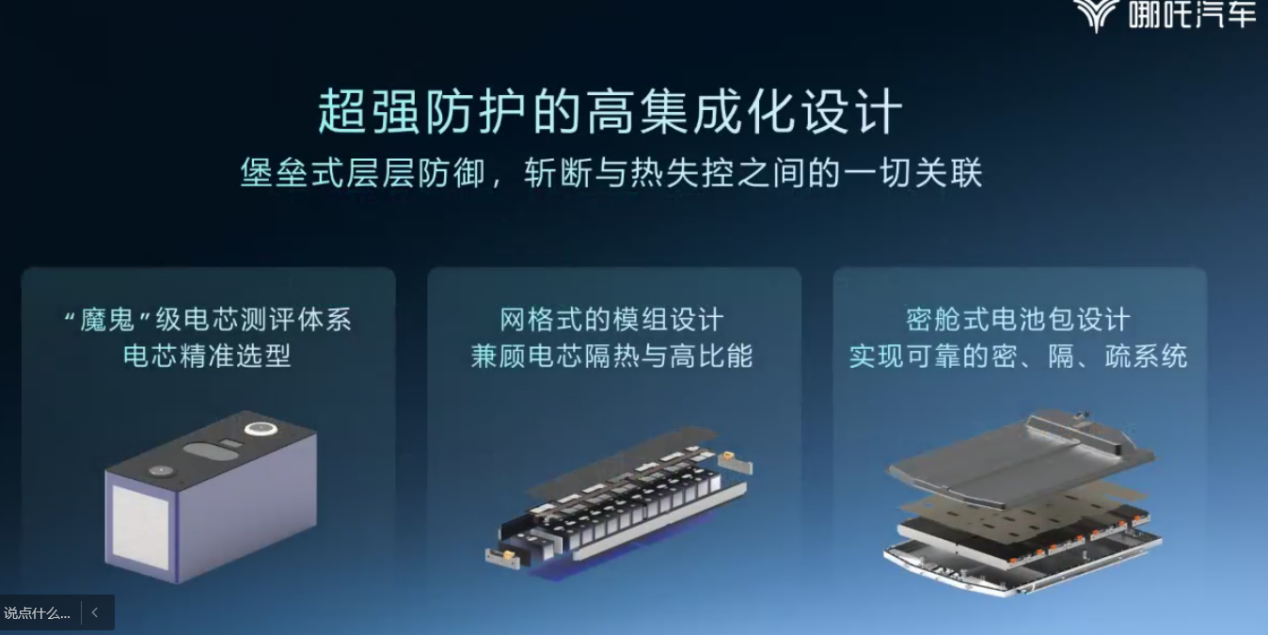
Firstly, in the selection of the battery cells, NETA Auto has established more than 900 evaluation criteria, including over 400 performance evaluation requirements, over 400 simulation development and strategy algorithm parameter evaluation requirements, more than 20 safety evaluation regulations, and over 30 requirements for mechanical reliability, electrochemical data evaluation, and thermal performance optimization and validation. Based on this, NETA Auto strictly screens the battery cells.
Zhang Honglei said that with regard to the protection of individual battery cells, NETA uses high-temperature-resistant protective materials, built-in short-circuit fuse protection, self-opening pressure relief explosion-proof valves, and high-level pole column insulation.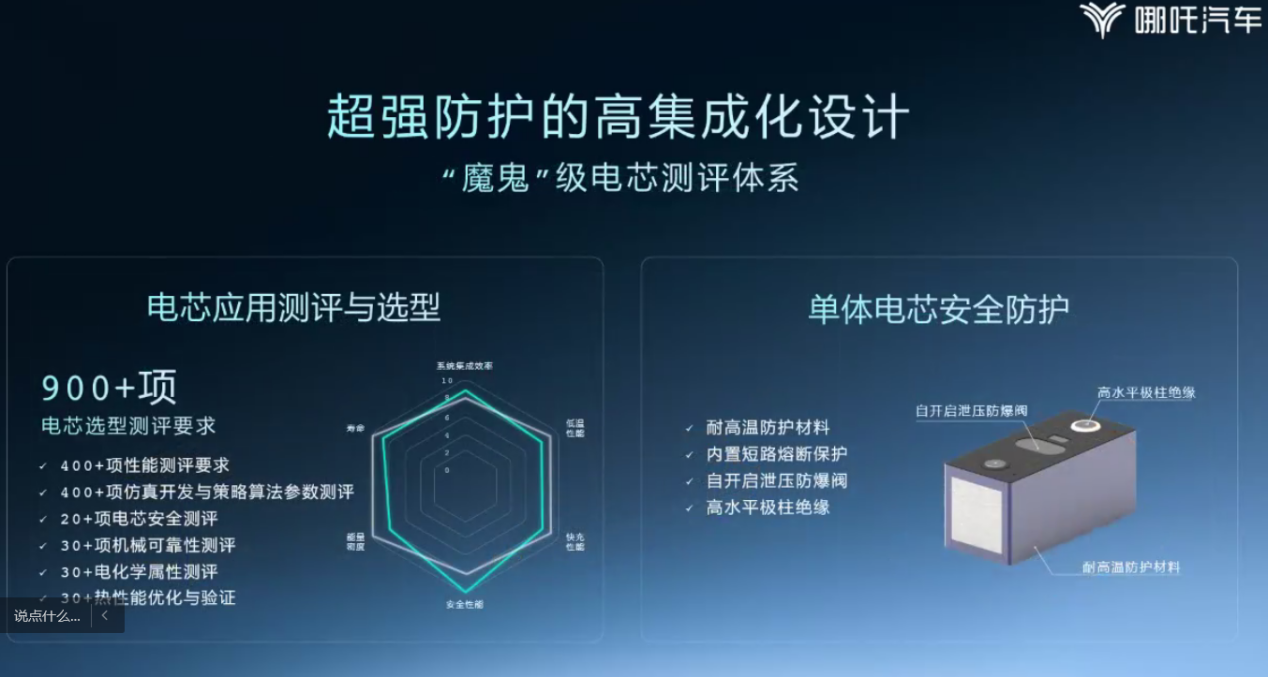
The so-called grid-like module design of NIO involves a full-system simulation from battery cells to modules, and finally to the pack, in collaboration with Company C and Tsinghua University. This design features the grid-like structure, a design that balances insulation and high specific energy.
To insulate the battery cells, NIO uses aerospace-grade flame-retardant material, which can withstand temperatures above 1000℃. Electrical protection meets military-grade standards and adopts insulation redundancy design, short circuit redundancy design, and module-level short circuit redundancy safety design with more than 800V. The battery pack uses a compartmentalized structure, with a lightweight and high-strength aluminum frame that can withstand over 2000N of expansion, forming a high-integration large module structure.
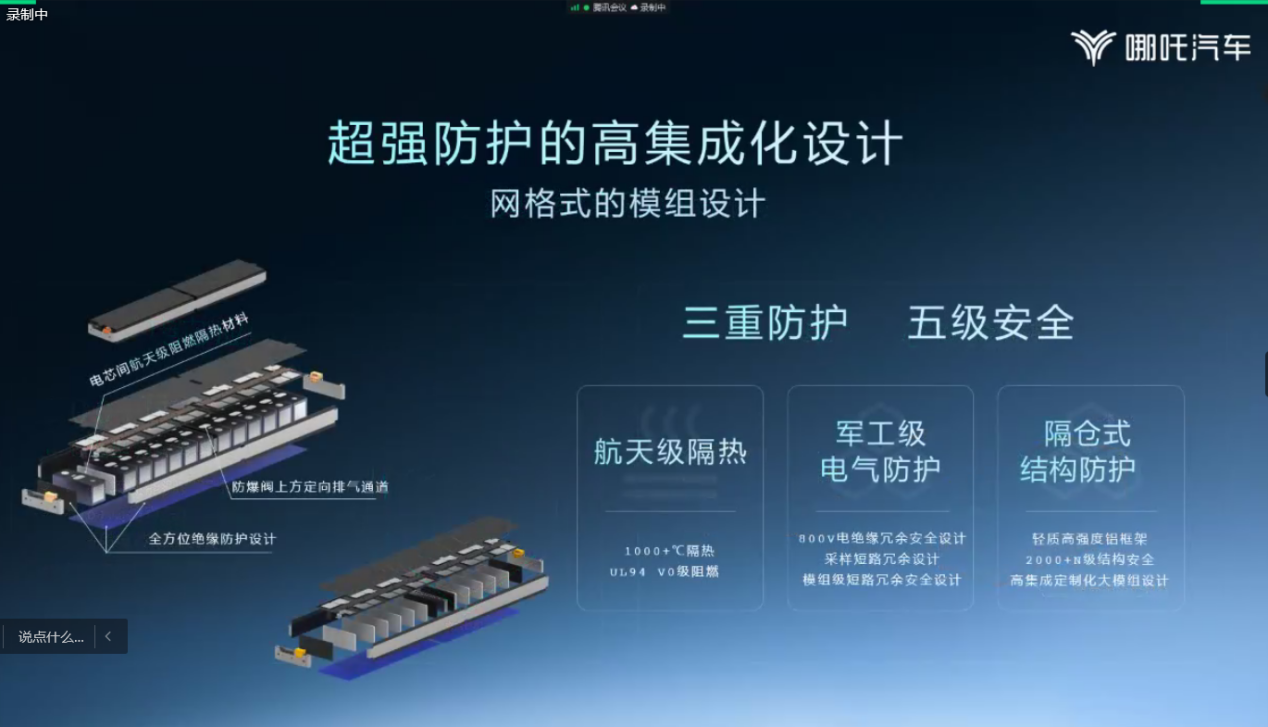
In terms of structure, CATL also strives for high integration and lightweight. The battery pack uses an ultra-light composite cover and high-integration, double-sealed lower casing. In terms of thermal management, NIO’s approach is relatively conventional, with strategies of thermoelectric separation, directed thermal dissipation and high-temperature insulation.
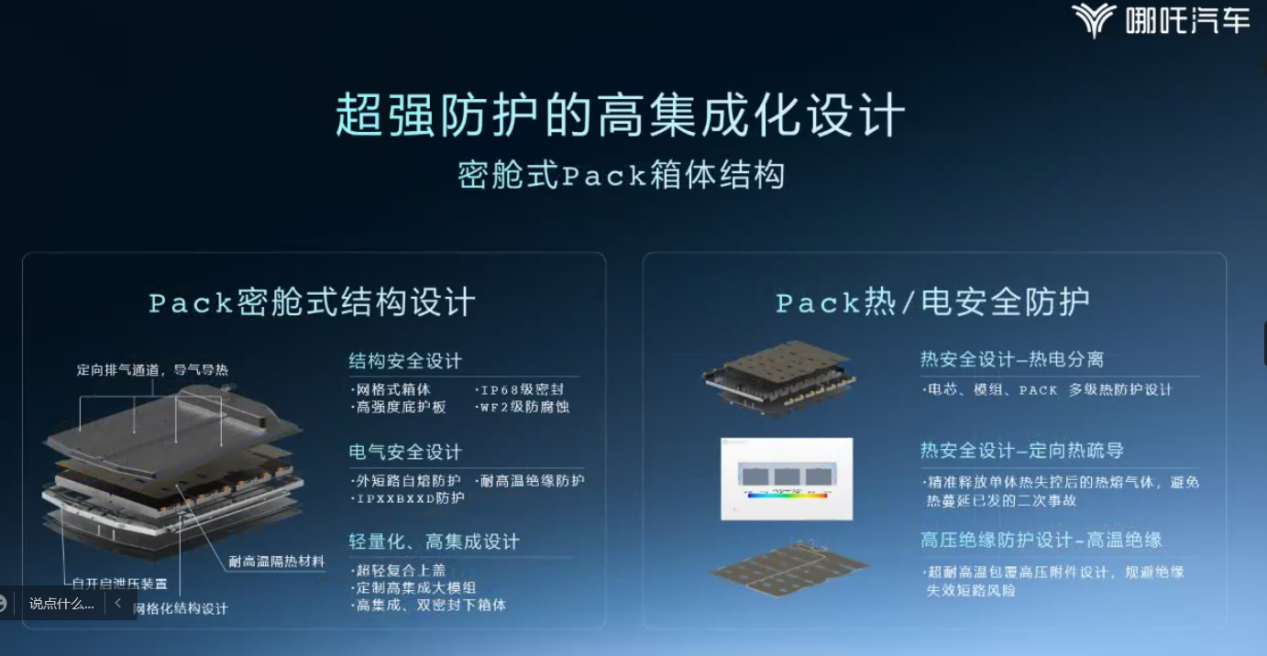
However, NIO’s battery system is not only safe, but also efficient and energy efficient in thermal management.
Thermal Management: Focusing on Intelligence, Efficiency, and Constant Temperature
CATL’s thermal management system is a customized nanny-like temperature management strategy, which can precisely control temperature in all domains and all regions, anticipating and responding to temperature changes, and delivering a fast and reliable charging experience, as well as long-lasting endurance.
For example, in response to winter range anxiety, NIO adopts a heat pump thermal management system, which increases winter range by 20% in comparison to traditional PTC heating methods with less energy consumption.
The CATL battery’s thermal management system can achieve the following four things:
Firstly, an intelligent forward thermal management system that formulates control strategies at the front end. Based on battery temperature, driving conditions, and other factors, the system can precisely calculate the wattage and select the most cost-effective mode to save energy.
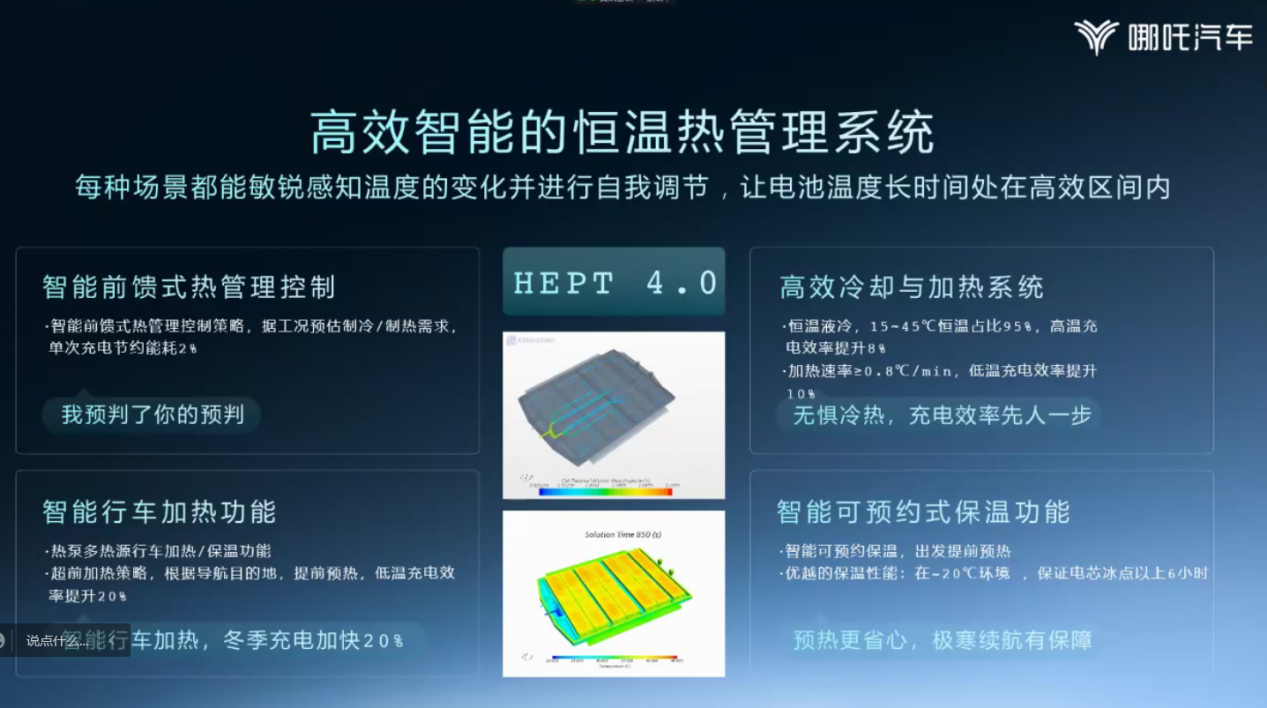
Secondly, intelligent driving heating function. NIO uses a heat pump thermal management system for multi-source driving heating/insulation, increasing the driving range by 20% in winter.NETA is China’s first car company to introduce energy flow field management and control strategies. Based on big data information in the map, such as how much uphill and downhill, energy consumption allocation can be assigned. By calculating the distance of the AB points, it is also possible to know the most suitable time for heating, which helps greatly improve the driving range.
Third, efficient cooling and heating system. Through constant temperature liquid cooling, the proportion of battery constant temperature state at 15-45℃ reaches 95%, and the heating rate of temperature rise has also reached 0.8 degrees per minute, which is now close to 1 degree. High temperature charging efficiency has been increased by 8%, and low temperature charging efficiency has been increased by 10%.
Fourth, intelligent and bookable heat preservation function. NETA has added some algorithms on the mobile app, such as preheating and heat preservation functions before going out, which provides more guarantee for battery life in cold weather.
Full Lifecycle Management: Forward-looking Closed-loop Management
In terms of battery full lifecycle management, NETA adopts forward-looking thinking: through big data analysis, we comprehensively excavate anomalies and other potential failure individuals. Through remote diagnosis and convenient operation and maintenance, we achieve closed-loop management throughout the full lifecycle.
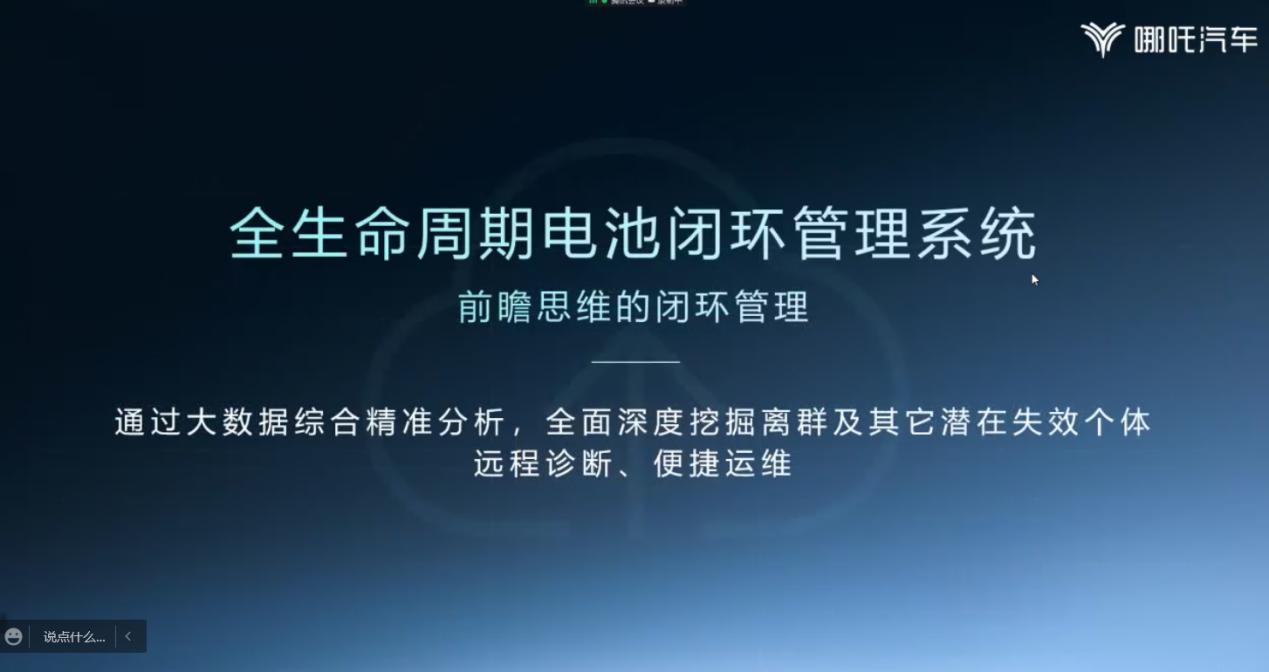
Specifically, NETA has full-scene algorithm capabilities, develops customized functions for customers based on user profiles, and achieves intelligent energy management and battery safety monitoring.
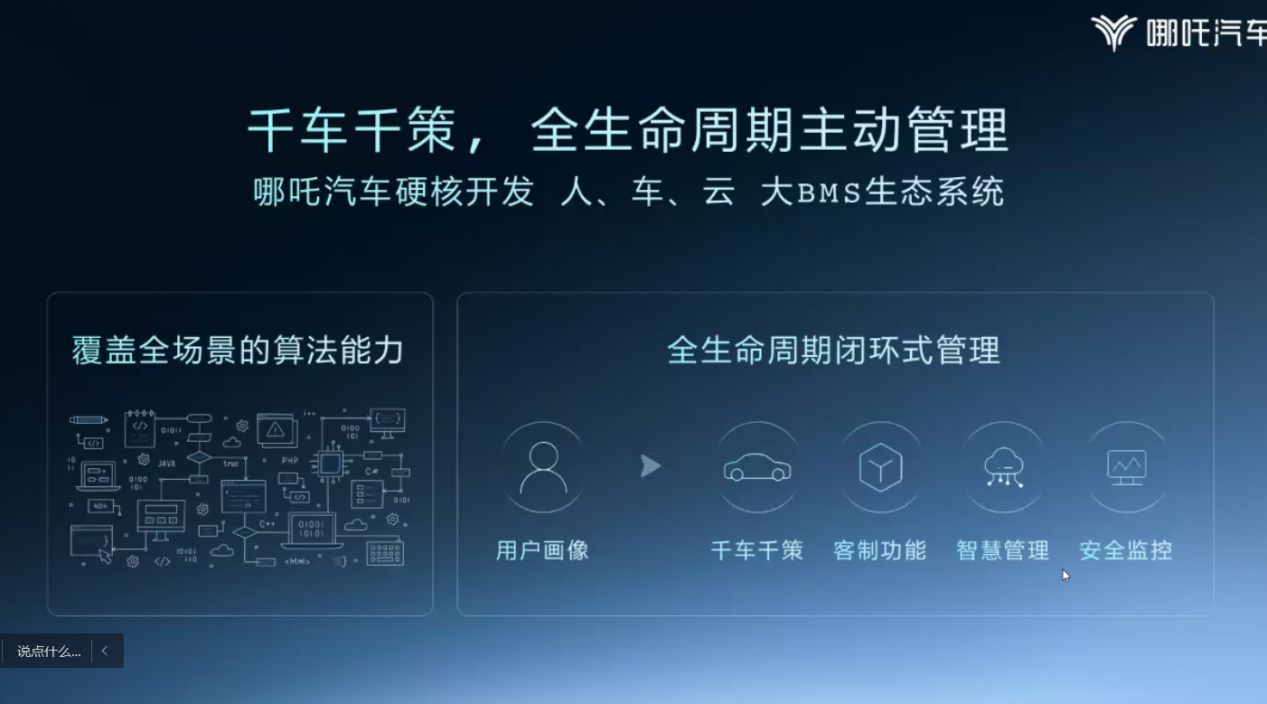
To achieve these capabilities, powerful algorithm support is needed. This part of the capabilities cannot be separated from NETA’s partners-360 and CATL. “Our cooperation with 360 provides NETA with user big data and cloud capabilities, and empowers information security. As an important shareholder, CATL provides NETA with experimental data and production data of early batteries, and combined with the vehicle data and driving data of JAC, it has created the whole closed-loop. ” Zhang Honglei said.
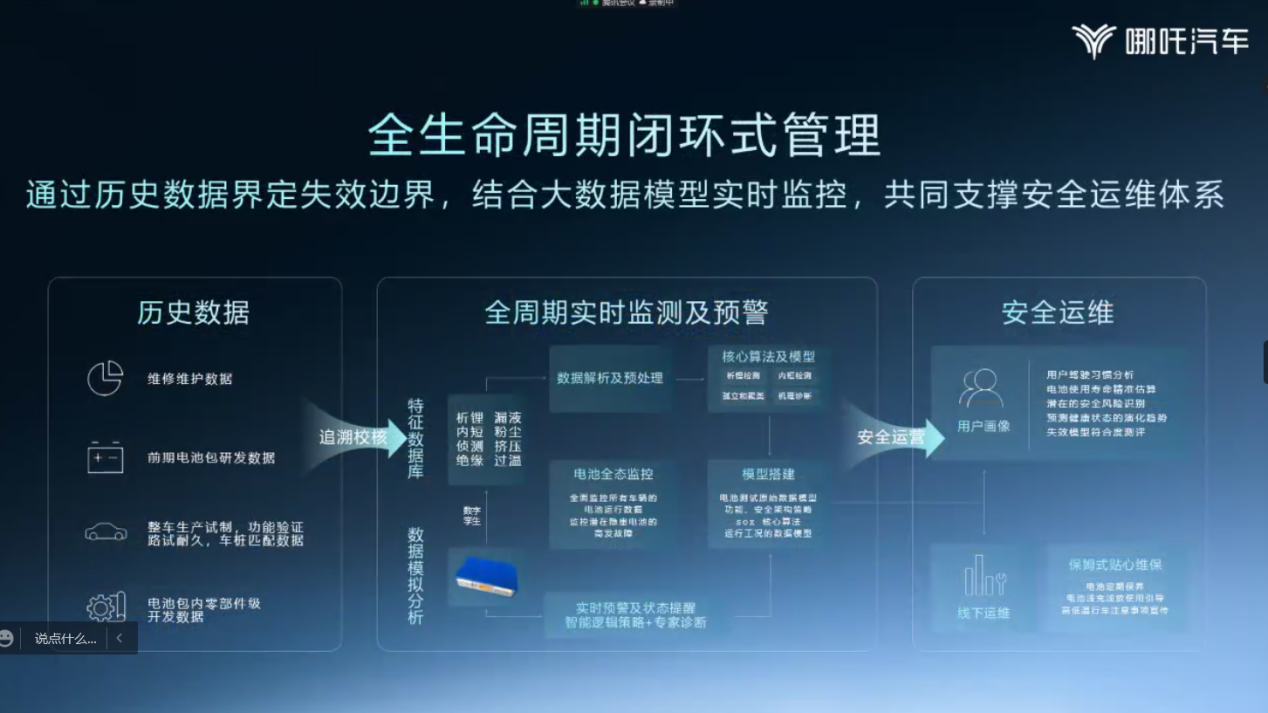
NETA’s algorithms can cover various scenes including driving, charging, and stationary scenarios.
Comparing these data with laboratory data of battery design analyzes problems like lithium dissolution, impurities, micro-short circuits, software, etc. and provides advanced warning.
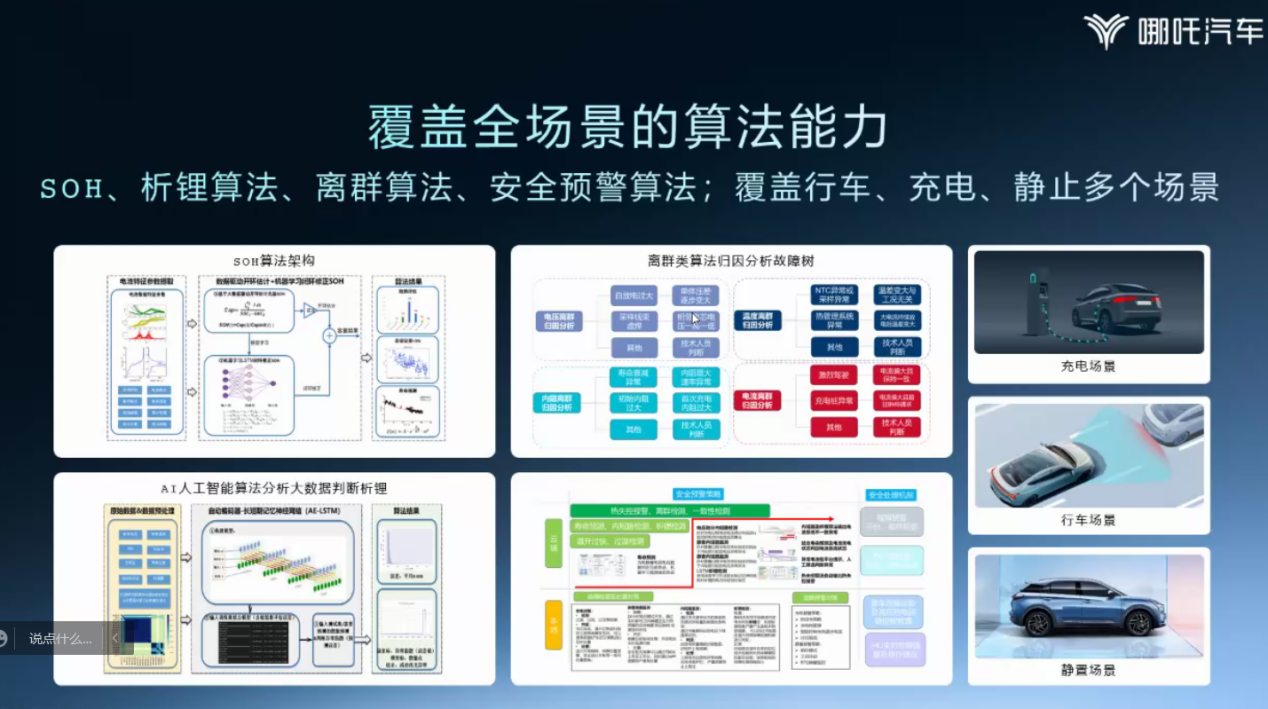
Of course, this system can also estimate the final residual value of the battery.Currently, Tian Gong’s battery system is still in the second stage, which is the custom large module stage. NETA is about to enter the third stage, that is, the stage of high-integration CTC in 2023.
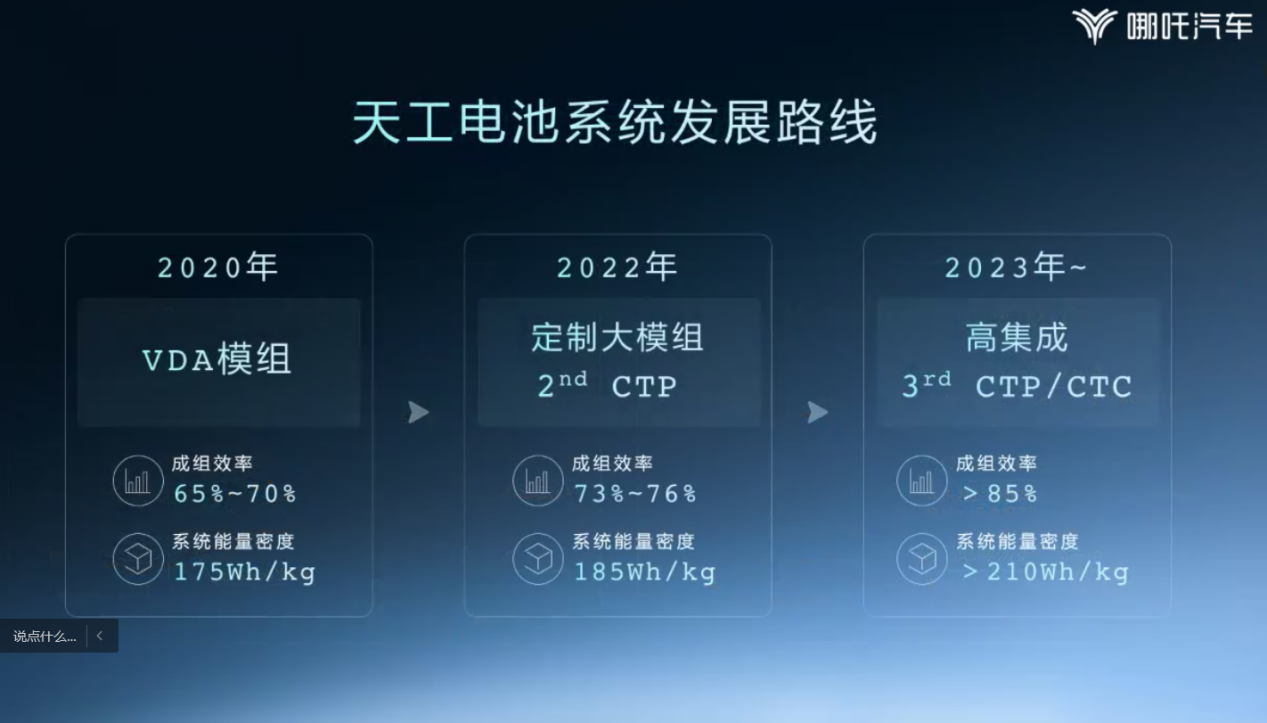
In addition, NETA revealed that their CTC cooperation with CATL had already been engineering frozen, and several test vehicles had been produced. They will upgrade the “Shan Hai Platform” at the end of next year and select a base for process upgrading in the later stage. Relevant information will be announced in the near future.
This article is a translation by ChatGPT of a Chinese report from 42HOW. If you have any questions about it, please email bd@42how.com.
